Comprehensive Analysis of Roofing Contractor Costs: A Guide to Roof Replacement Expenses
Roof replacement is a significant investment for homeowners and businesses. This comprehensive guide analyzes the costs associated with roof replacement, comparing different materials, labor expenses, and regional variations. Readers will gain valuable insights into factors affecting roofing expenses, signs indicating the need for replacement, and steps to obtain accurate estimates. By understanding these elements, property owners can make informed decisions and potentially save money on their roofing projects.
Key Takeaways
- Roof replacement costs vary widely based on materials, labor, and property characteristics
- Geographic location significantly impacts roofing costs due to climate and economic factors
- Adding insulation or ventilation systems can increase costs but improve energy efficiency
- Comparing detailed estimates from multiple contractors helps homeowners make informed decisions
- Recognizing signs of roof deterioration is crucial for timely replacement decisions
Understanding the Average Cost of Roof Replacement

Roof replacement costs vary widely, influenced by factors such as materials, labor, and property characteristics. Engaging a roofing contractor in nj & pa can help homeowners plan this significant investment. Understanding the typical expense range and cost-influencing elements is crucial. From ridge vent installation to copper flashing, each component contributes to the overall cost. Homeowners in Levittown, PA might consider a roofing levittown pa. Factors like potential leaks and wind resistance also play a role in determining the final expense.
Typical Range of Roof Replacement Expenses
The typical range of roof replacement expenses varies based on several factors, including the complexity of the hip roof design and the expertise of the professional roofing contractor in NJ & PA. According to the Bureau of Labor Statistics, roofing costs have increased steadily over recent years. Homeowners should consider their credit options when budgeting for this significant investment. For residents seeking services, roofing levittown pa provides reliable options. Additionally, hiring a roofing contractor in nj & pa can ensure quality workmanship. Choosing a local service like roofing levittown pa can also offer better support. The following table illustrates average roof replacement costs:
| Roof Type | Average Cost | Factors Influencing Price |
|---|---|---|
| Asphalt Shingle | $5,000 – $12,000 | Material quality, roof size |
| Metal Roof | $12,000 – $30,000 | Metal type, complexity of installation |
| Tile Roof | $15,000 – $45,000 | Tile material, structural requirements |
Factors Influencing Roofing Costs
Several factors influence roofing costs, including ventilation requirements, material choices such as terracotta tiles, and the presence of architectural features like dormers. Overhead expenses for roofing contractors, ranging from roofing levittown PA to roofing contractor in NJ & PA, and inflation rates also impact the final price. The complexity of the roof structure, particularly in homes with multiple dormers or steep pitches, can significantly increase labor costs and material requirements:
Terms:
| Factor | Impact on Cost | Consideration |
|---|---|---|
| Ventilation | 5-10% increase | Proper airflow extends roof life |
| Terracotta Tiles | 30-50% higher than asphalt | Durability and aesthetic appeal |
| Dormers | 15-25% additional cost | Complexity in flashing and waterproofing |
| Inflation | Variable, year-over-year increase | Affects material and labor costs |
The numbers are clear. Now, let’s examine the materials that shape those costs.
Comparing Costs for Different Roofing Materials
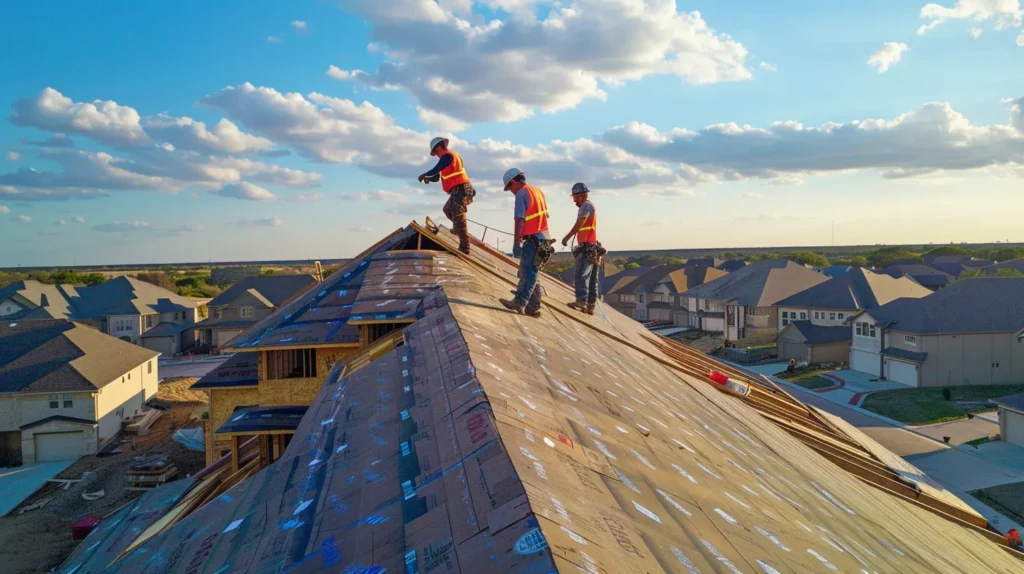
Roofing material choices significantly impact replacement costs. This section examines price differences between asphalt shingles and metal roofing, as well as cost implications of tile and wood shake roofs. Factors such as deck condition, accessibility, and roofing contractor expertise from roofing contractor in nj & pa and roofing levittown pa influence overall expenses. Understanding these variations helps homeowners make informed decisions aligned with their budget and insurance policy requirements.
Price Differences Between Asphalt Shingles and Metal Roofing
Asphalt shingles and metal roofing represent two distinct cost tiers in roof replacement. While asphalt shingles typically cost $3 to $5 per square foot, metal roofing can range from $7 to $14 per square foot. This price difference reflects the materials’ varying longevity and durability. Metal roofs often last 50 years or more, compared to 20-30 years for asphalt shingles. The rafter structure and overall roof design may also influence installation costs, with metal roofing sometimes requiring additional support. Hiring a roofing contractor in nj & pa or roofing levittown pa can ensure proper installation and potentially reduce costs.
Cost Implications of Tile and Wood Shake Roofs
Tile and wood shake roofs represent premium roofing options with distinct cost implications. Wood shingles and shakes, made from cedar or redwood, typically cost $6 to $9 per square foot installed, while tile roofs can range from $10 to $18 per square foot. The installation process for both materials often requires specialized skills and may necessitate additional structural support, such as reinforced oriented strand board decking. Homeowners searching for “roof replacement near me” should consider these factors when budgeting for a high-end roof renovation:
| Roofing Material | Cost per Square Foot | Lifespan | Additional Considerations |
|---|---|---|---|
| Wood Shakes | $6 – $9 | 30-40 years | Fire treatment, regular maintenance |
| Clay Tiles | $10 – $18 | 50+ years | Structural reinforcement, breakage risk |
| Concrete Tiles | $9 – $16 | 50+ years | Heavy weight, potential for algae growth |
Materials matter, but labor costs can make or break a roofing project. Let’s examine how skilled workers impact your bottom line.
Analyzing Labor Costs for Roof Replacement
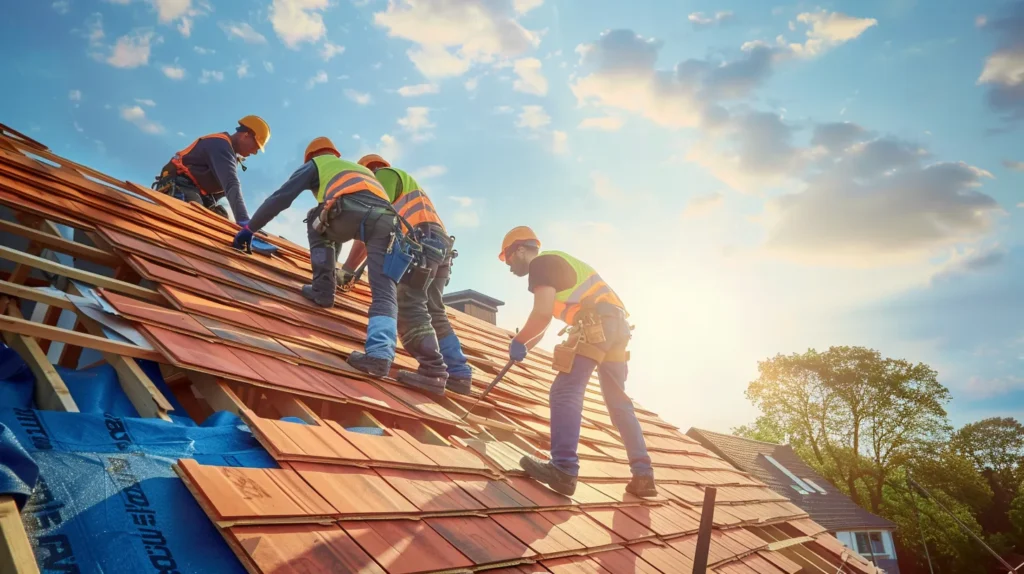
Labor costs constitute a significant portion of roof replacement expenses. This section examines average labor rates for various roofing projects and regional variations in roofer costs. Understanding these factors helps homeowners budget effectively when seeking roofing companies or a roofing contractor in NJ & PA. Considerations such as safety measures, home insurance requirements, and potential debt implications also influence overall project costs.
Average Labor Rates for Various Roofing Projects
Labor rates for roofing projects vary depending on the complexity of the job and the materials used. Contractors often charge between $50 to $80 per hour for standard asphalt shingle installations, while more specialized materials like slate or copper may command rates of $100 to $150 per hour. The Better Business Bureau recommends homeowners obtain multiple quotes to ensure fair pricing. Factors such as roof pitch, moisture barriers, and construction challenges can impact labor costs. Homeowners considering using home equity to finance their roof replacement should carefully weigh the long-term financial implications against the immediate need for a new roof.
Regional Variations in Labor Costs for Roofers
Labor costs for roofers exhibit significant regional variations, influenced by factors such as local economic conditions, cost of living, and market demand. In urban areas with high home improvement activity, roofing companies may charge premium rates due to increased competition and operational expenses. Conversely, rural regions might offer more competitive pricing. The installation of a metal roof, known for its durability and energy efficiency, often commands higher labor rates regardless of location. Homeowners should consider these regional differences when budgeting for roof replacement, as they can impact the overall project cost and potential interest rates for financing options.
Labor costs vary widely. The size and structure of your roof shape the final price.
Evaluating Costs Based on Roof Size and Structure
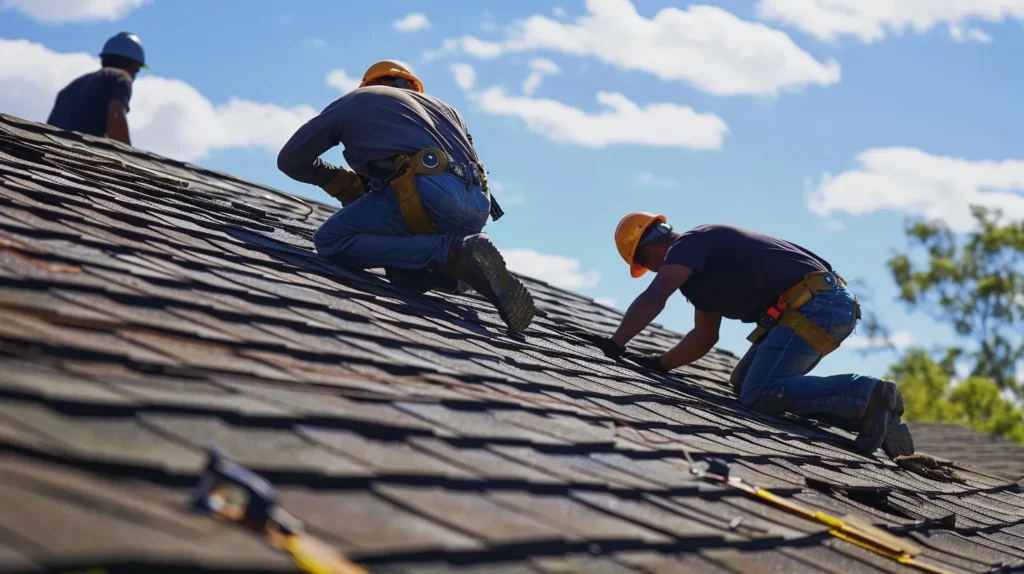
Roof size and structure significantly influence replacement costs. The dimensions of a roof directly impact material requirements and labor time, while roof pitch affects installation complexity and safety measures. Understanding these factors helps homeowners anticipate expenses for components like flashing and fascia. Roofers consider these elements when calculating project costs, which can affect the overall life expectancy of materials such as clay tiles.
How Roof Dimensions Impact Replacement Expenses
Roof dimensions directly influence replacement expenses, with larger roofs requiring more materials and labor, thus increasing costs. The roof’s square footage, measured in “squares” (100 square feet), determines the quantity of shingles, underlayment, and plywood needed. Complex roof structures with multiple angles or trusses may require additional time and expertise, impacting labor costs. Energy-efficient roofing options, while potentially more expensive initially, can offset long-term costs through improved durability and reduced energy consumption. Contractors must also consider the cost of living in the area when pricing materials and labor:
| Roof Size (Squares) | Estimated Material Cost | Estimated Labor Cost |
|---|---|---|
| 10-15 | $2,500 – $3,750 | $1,500 – $2,250 |
| 20-25 | $5,000 – $6,250 | $3,000 – $3,750 |
| 30-35 | $7,500 – $8,750 | $4,500 – $5,250 |
The Role of Roof Pitch in Cost Calculations
Roof pitch plays a crucial role in determining roof replacement costs, with steeper pitches generally increasing expenses due to heightened safety requirements and installation complexity. A flat roof, for instance, may have lower initial costs but often requires specialized materials like EPDM rubber, which can impact the overall roof replacement cost. Roofing contractors in Indianapolis and other regions factor in pitch when calculating labor and material expenses, as steeper roofs require more time and skill to install properly. The reputation of the roofing company often reflects their ability to handle various roof pitches effectively, ensuring quality work regardless of the roof’s angle:
- Low-slope roofs (2:12 to 4:12 pitch): Easier to work on, but may require special waterproofing
- Medium-slope roofs (4:12 to 8:12 pitch): Standard pitch, generally more affordable to install
- Steep-slope roofs (8:12 pitch and above): Require additional safety measures and specialized techniques, increasing costs
Roof size shapes costs, but location plays a key role too. Geography affects material prices and labor rates across different regions.
Geographic Influence on Roofing Contractor Costs

Geographic factors significantly influence roofing contractor costs, impacting everything from material availability to labor rates. This section examines the cost disparities between urban and rural areas, as well as regional variations across different locations. Understanding these differences is crucial for homeowners planning roof inspections, repairs, or replacements, especially when considering sustainability measures or insurance policy requirements. The type of roof shingle used and local climate conditions also play roles in determining overall expenses.
Average Roofing Costs in Urban vs. Rural Areas
Roofing costs vary significantly between urban and rural areas, with metropolitan regions like New York City typically commanding higher prices for roof installation and renovation projects. Urban areas often face increased expenses due to factors such as higher labor costs, stricter building codes, and logistical challenges associated with densely populated environments. Conversely, rural locations may offer more competitive pricing for roofing projects, though this can be offset by increased travel costs for materials and labor. The disparity in pricing reflects the broader economic differences between urban and rural settings:
- Urban areas: Higher labor rates, increased material costs, complex permitting processes
- Rural areas: Lower overhead costs, potentially longer travel times, less competition among contractors
- Suburban regions: Often fall between urban and rural pricing, balancing accessibility with lower costs
Variations in Costs by Geographic Location
Geographic location significantly influences roofing contractor costs, with variations observed across different regions. Factors such as local climate, availability of materials, and regional economic conditions impact the overall expense of roof replacement projects. For instance, areas prone to severe weather may require more robust materials for gable roofs, increasing costs. The presence of features like chimneys and the condition of the attic can also affect pricing. Some regions may favor specific materials, such as zinc roofing, due to their durability in local conditions. These geographic variations can be summarized as follows:
- Coastal areas: Higher costs due to salt-resistant materials and hurricane-proof installations
- Mountain regions: Increased expenses for snow-load resistant roofing and specialized installation techniques
- Arid climates: Focus on heat-reflective materials and UV-resistant coatings
- Urban centers: Premium pricing due to higher labor costs and stricter building codes
- Rural locations: Potentially lower costs but may incur additional transportation expenses
The cost of roofing varies across regions, shaped by local factors. Labor and materials form the bulk of expenses, with roof removal playing a crucial role.
The Expense of Roof Removal and Preparation
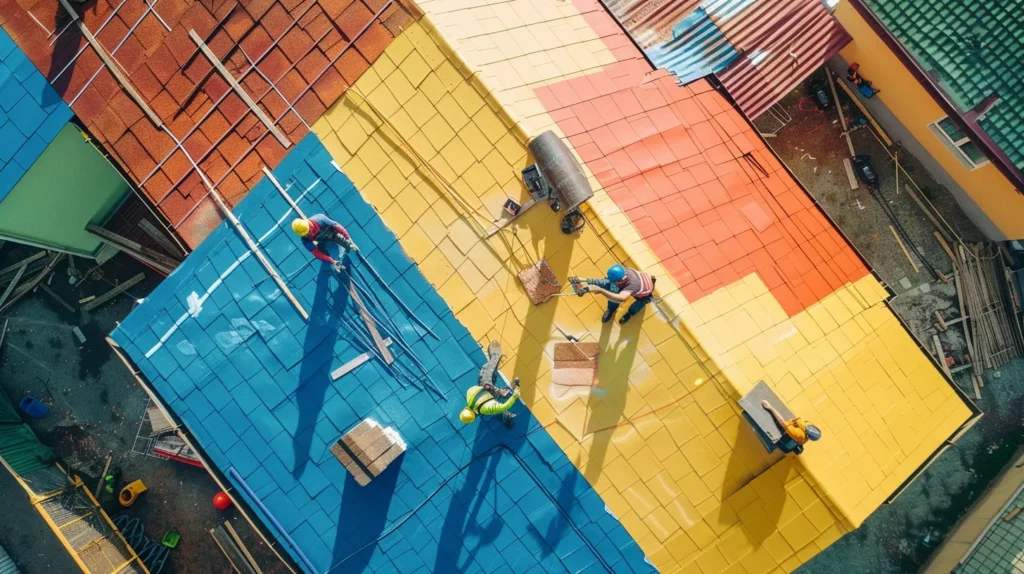
Roof removal and preparation are crucial steps in the replacement process, impacting overall costs. This section examines additional expenses associated with old roof removal and necessary preparations affecting pricing. Factors such as building code compliance, hail damage assessment, and landscape protection contribute to the final fee. Homeowners may consider a line of credit to manage these expenses effectively.
Additional Costs Associated With Old Roof Removal
The removal of an old roof contributes significantly to the overall cost of roof replacement. Contractors must factor in labor expenses for safely dismantling and disposing of existing materials, which can increase if multiple layers of shingles or extensive damage is present. Additional costs may arise from addressing underlying issues such as rotted decking or the need for improved ventilation to prevent snow dams. Homeowners should consider using home equity to finance these necessary preparatory steps, as they directly impact the longevity and performance of the new roof.
Necessary Preparations That Affect Overall Pricing
Professional roofing contractors consider various necessary preparations that affect overall pricing when undertaking a roof replacement project. These preparations may include addressing existing water damage, reinforcing gable structures, or accommodating skylights and solar power installations. The extent of these preparatory measures directly impacts the final cost, as they require additional labor, materials, and expertise to ensure the new roof’s longevity and performance.
With the foundation set, the real work begins. Now, let’s explore the extras that can elevate your roof from functional to exceptional.
Examining Additional Features and Upgrades
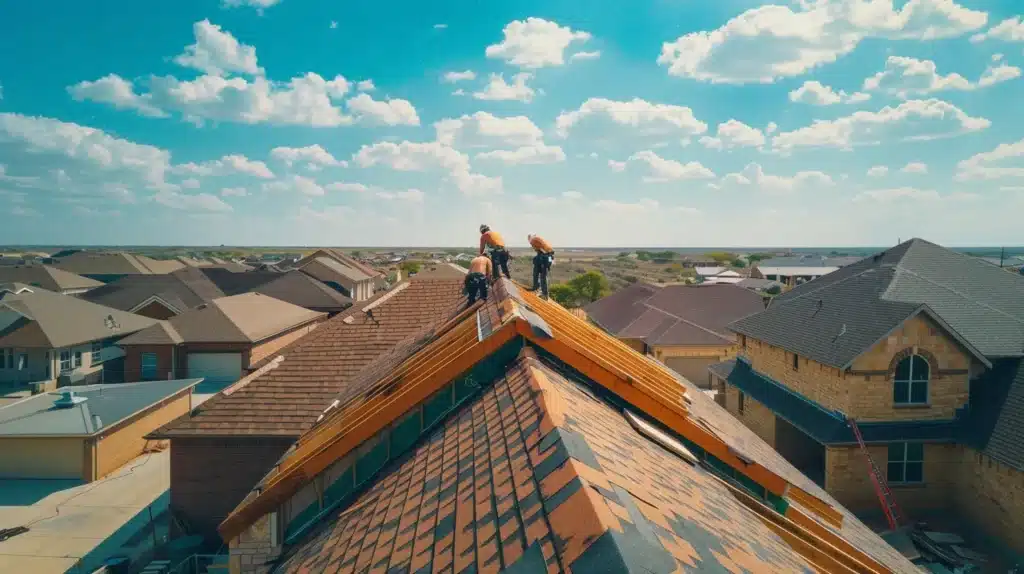
Additional features and upgrades can significantly impact roof replacement costs. This section explores the expenses associated with adding insulation or ventilation systems, which vary by zip code and local climate conditions. It also examines the financial implications of aesthetic enhancements, such as premium roof tiles or fiberglass options. Factors like soffit design and supply chain issues can influence these costs, affecting overall project budgets.
Cost of Adding Insulation or Ventilation Systems
Adding insulation or ventilation systems to a roof can significantly impact the overall cost of a replacement project. Roofing contractors often recommend these upgrades to improve energy efficiency and extend the life of the roof. The expense varies depending on factors such as the roof’s pitch and the customer’s specific needs. For instance, installing a CertainTeed ventilation system on a high-pitch roof may cost more due to the complexity of the installation process. Homeowners should consider these additional features as long-term investments that can reduce energy costs and prevent issues like ice dams or moisture buildup in the attic or bathroom areas.
The Financial Impact of Aesthetic Enhancements
Aesthetic enhancements can significantly increase the overall cost of roof replacement, with premium materials like Owens Corning shingles commanding higher prices due to their superior quality and extended warranty options. The complexity of installation for decorative elements, such as ornate siding or intricate flashing details, often requires specialized skills and additional labor time, further impacting the final expense. Homeowners should consider the long-term value of these upgrades, particularly in areas prone to storms, as enhanced aesthetics can improve property value and potentially offer better protection against severe weather conditions.
The wind shifted. Dark clouds gathered, signaling trouble on the horizon.
Signs Indicating the Need for Roof Replacement
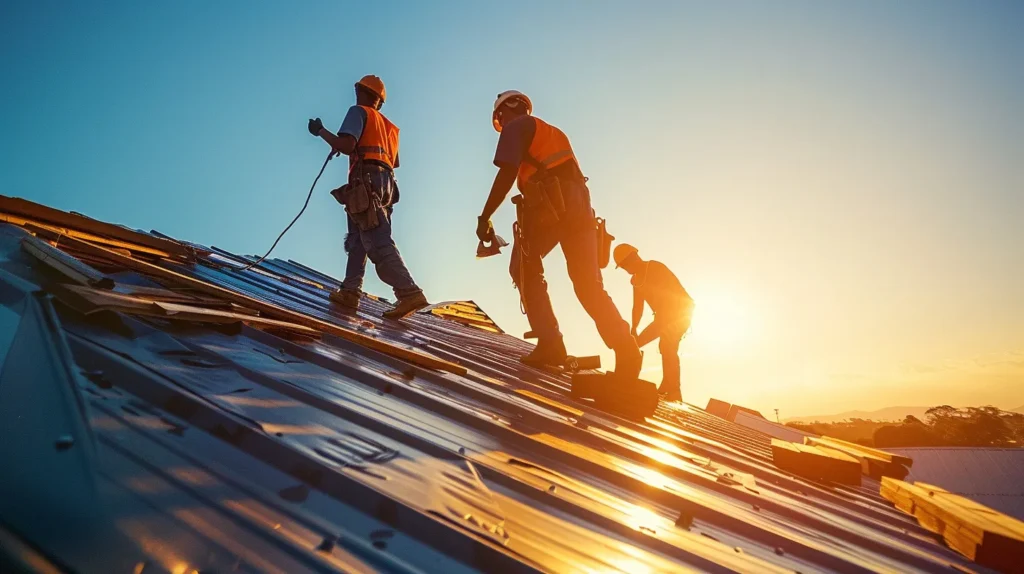
Recognizing signs of roof deterioration is crucial for timely replacement decisions. This section examines common issues that necessitate roof replacement and conducts a cost-benefit analysis of repairing versus replacing. Understanding these factors helps homeowners make informed choices, potentially improving energy efficiency and avoiding costly damage. Roofing inspectors often assess steel components and manufacturing quality to determine the best course of action, considering both immediate needs and long-term price implications.
Common Issues That Lead to Replacement Decisions
Several common issues often lead homeowners to consider roof replacement, including persistent leaks, extensive shingle damage, and visible sagging. In Levittown, PA, roofing contractors frequently encounter these problems, particularly with older homes that may have outdated tile or tin roofs. Homeowners facing such issues might explore financing options like home equity loans to cover the replacement costs. When evaluating the need for a new roof, it’s crucial to consult with a reputable contractor who can assess the extent of the damage and provide a detailed contract outlining the necessary work.
Cost-Benefit Analysis of Repairing vs. Replacing a Roof
Conducting a cost-benefit analysis between repairing and replacing a roof is crucial for homeowners facing roofing issues. While repairing an asphalt shingle roof may seem cost-effective in the short term, it often proves more expensive over time, especially in harsh climates prone to algae growth. Roof replacement costs, though initially higher, can provide long-term savings through improved energy efficiency and reduced maintenance needs. Professional roofing contractors can assess factors such as the extent of damage, the roof’s age, and local climate conditions to determine the most cost-effective solution for each unique situation.
Knowing the signs is vital. But understanding how to get accurate estimates is equally crucial.
Steps for Obtaining Accurate Roofing Estimates

Obtaining accurate roofing estimates is crucial for homeowners planning a roof replacement. This section outlines key questions to ask roofing contractors and provides guidance on comparing estimates effectively. By following these steps, homeowners can make informed decisions and ensure they receive quality service at a fair price for their roofing project.
Key Questions to Ask Roofing Contractors
When seeking accurate roofing estimates, homeowners should ask contractors specific questions to ensure comprehensive and transparent pricing. These inquiries should cover aspects such as material quality, warranty details, and projected timeline for the roof replacement project. By discussing potential challenges, such as structural issues or the need for additional ventilation, homeowners can obtain more precise estimates that account for all necessary work. Experienced roofing professionals can provide insights into energy-efficient options and local building code requirements, helping homeowners make informed decisions about their roofing investment.
How to Compare Estimates Effectively
To compare roofing estimates effectively, homeowners should create a detailed comparison matrix that includes key factors such as material costs, labor charges, project timeline, and warranty information. This approach allows for a systematic evaluation of each contractor’s proposal, highlighting any significant discrepancies or unique offerings. Homeowners should also consider the reputation and experience of each roofing company, verifying credentials and checking references to ensure quality workmanship. By analyzing these elements comprehensively, homeowners can make an informed decision that balances cost with value:
| Comparison Factor | Contractor A | Contractor B | Contractor C |
|---|---|---|---|
| Material Cost | $X,XXX | $X,XXX | $X,XXX |
| Labor Cost | $X,XXX | $X,XXX | $X,XXX |
| Project Timeline | X days | X days | X days |
| Warranty | X years | X years | X years |
| Additional Services | List services | List services | List services |
Frequently Asked Questions
What is the average cost of roof replacement for a typical home?
The average cost of roof replacement for a typical home in Central New Jersey and Eastern PA ranges from $5,000 to $15,000, depending on factors such as roof size, material quality, and complexity. Professional roofing contractors like My Roofing Contractor can provide accurate estimates based on specific home requirements.
How do labor costs affect the overall expense of replacing a roof?
Labor costs significantly impact the overall expense of roof replacement, typically accounting for 40-50% of the total cost. Factors such as roof complexity, material removal, and local wage rates influence labor expenses, making it a crucial consideration when budgeting for a new roof.
Does the size and structure of a roof impact replacement costs?
The size and structure of a roof significantly impact replacement costs. Larger roofs require more materials and labor, increasing expenses. Complex designs with multiple slopes, valleys, and features like skylights or chimneys also raise costs due to additional time and skill needed for installation.
How does geographic location influence roofing contractor pricing?
Geographic location significantly impacts roofing contractor pricing due to factors such as local labor costs, material availability, climate considerations, and regional building codes. Areas with higher living costs or extreme weather conditions typically see higher prices for roofing services compared to more moderate regions.
What are the key signs that indicate a roof needs replacement?
Signs of a roof needing replacement include curling or missing shingles, excessive granules in gutters, daylight through roof boards, sagging areas, and water stains on ceilings. Age is also a factor, with most roofs lasting 20-30 years before requiring replacement.
Conclusion
Understanding the intricacies of roof replacement costs is crucial for homeowners facing this significant investment. From material selection to labor expenses, numerous factors influence the final price, including geographic location, roof size, and additional features. By obtaining accurate estimates and conducting thorough cost-benefit analyses, homeowners can make informed decisions that balance quality and affordability. Ultimately, a comprehensive understanding of roofing contractor costs empowers homeowners to protect their property effectively while managing their budget.
Serving Central New Jersey and Easter Pensylvania
My Roofing Contractor proudly serves New Jersey and Pensylvania, specializing in high-quality roofing services. Our comprehensive roofing services encompass roof replacements, installations, and roof repairs. Reach out to us today for a complimentary quote, and let us elevate your home’s roofing standards! With our availability, we are here to serve you.